United States in Afghanistan: 20 Years of Combat Explained
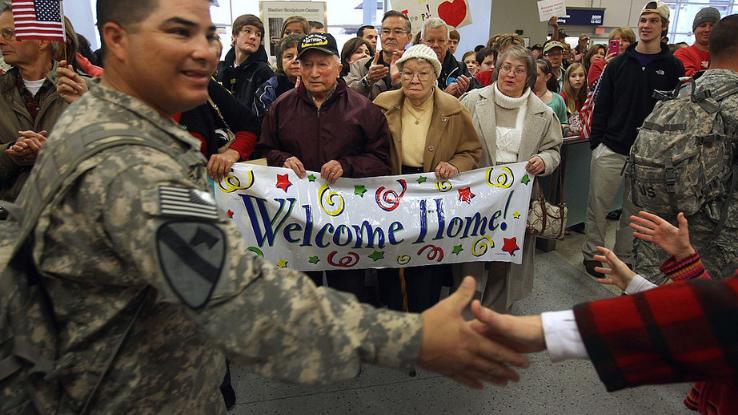
On May 3, 2003, George W. Bush famously stood in front of a banner that read “Mission Accomplished” and declared an end to major combat operations for the United States in Afghanistan. But it turns out that, by the time the United States would finally begin leaving Afghanistan, complications would arise in the Middle East that would eventually bring more American troops overseas.
The United States entered Afghanistan in 2001, shortly after several terrorist attacks took place on U.S. soil on September 11 of that year. The initial invasion of Afghanistan in October 2001 marked the beginning of a nearly 20-year-long succession of military missions constituting the U.S. War on Terror.
According to the Department of Defense, 2,352 U.S. citizens have died as a result of the war in Afghanistan. Brown University estimates that over 310,000 Afghani people, civilian or soldiers, have died due to the war. In August 2021, President Joe Biden withdrew U.S. troops from Afghanistan. Shortly thereafter, the Taliban regained control of Afghanistan and its capital, Kabul.
Afghanistan’s future seems clouded in uncertainty. All we can do is look back at how the war in Afghanistan came to be, some of the patriotic and inspired acts that the war fueled, and what made this the longest war in the history of the United States.
Was the U.S. at War With Afghanistan?
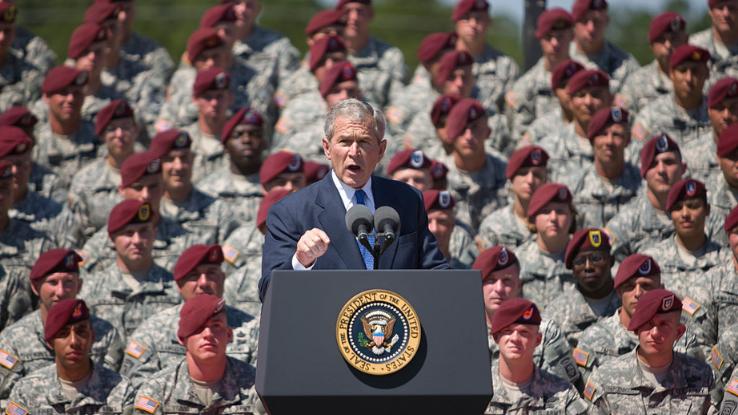
The answer to this question depends on whom you ask. Technically, the United States declared war on terror, terrorism, and the terrorists specifically involved in the 9/11 terrorist attacks. This War on Terror would later serve as the U.S. government’s justification to occupy countries in the Middle East, including Iraq — despite there being little credible evidence Iraq participated in the 9/11 attacks.
Following 9/11, the 107th United States Congress and President Geroge W. Bush wasted no time getting American and other allied soldiers on Afghani soil. On September 18, 2001, just one week after the attacks, Congress authorized the U.S. to send troops to Afghanistan. CIA personnel initially began arriving on September 26, and the combat element of Operation Enduring Freedom, the official name for the war, began on October 7, 2001.
Of the entire United States Senate and Congress, there was only one vote cast against this authorization — that of Representative Barbara Lee (D-Calif.) — which was intended to allow troops to use force against “those responsible for the 9/11 attacks.” U.S. leaders had a strong feeling that the attacks were connected to al-Qaeda, the terrorist organization led by Osama bin Laden, but bin Laden didn’t take responsibility for the attacks until 2004.
Al-Qaeda is a multinational network of militant groups that the UN, NATO and other international organizations widely regard as terroristic. Factions of the group have called many Middle Eastern countries home and cultivated a presence across the world. Aside from the 9/11 terror attacks, al-Qaeda took credit for multiple bombings in 1998 on U.S. Embassies in Kenya and Tanzania and the 2002 bombings in Bali, Indonesia.
The Taliban also played a key role in the War on Terror. This conservative religious group supported and worked closely with al-Qaeda. It hadn’t been a significantly active force until the mid-1990s, when, from 1996 to 2001, it maintained control over most of Afghanistan.
Al-Qaeda or not, the Taliban holds harmful fundamentalist values. Under the Taliban, women weren’t allowed to drive cars, walk outside without being accompanied by male relatives or receive significant education. Members of the LGBTQ+ community risked harassment, persecution and even death for revealing their gender identities and orientations. Progress still needs to be made in the Middle East, but under the Taliban, this type of meaningful change was all but impossible.
While the U.S. was claiming that its military presence in Afghanistan was a war on terror itself and not a war on Afghanistan, the U.S. did engage in regular airstrikes and ground combat with Afghani citizens, both Taliban and civilian. The U.S. also supported particular groups of people with aid and weapons with hopes of ousting another group within that country. From an outsider’s perspective, or an Afghani citizen’s point-of-view, it looked quite a bit like war.
George W. Bush’s time as commander-in-chief would, unfortunately, be plagued with scandal. His Vice President, Dick Cheney, was found to have had an inappropriate relationship with the company, Haliburton. Additionally, the Abu Ghraib torture and prisoner abuse scandal in 2004 exposed inhumane interrogation techniques in Afghanistan, Iraq and the Guantanamo Bay military detention center in Cuba.
Despite this, in 2004 Afghanistan held its first election as the Republic of Afghanistan. And other changes were happening around the country. More modern technology was reaching smaller towns. Young women and girls were allowed to go to school and dress more freely. To some, this created the appearance that the U.S. military presence was potentially beneficial. But when George W. Bush’s second term came to an end, people were ready for change.
The Obama Years: Withdrawal and Surge
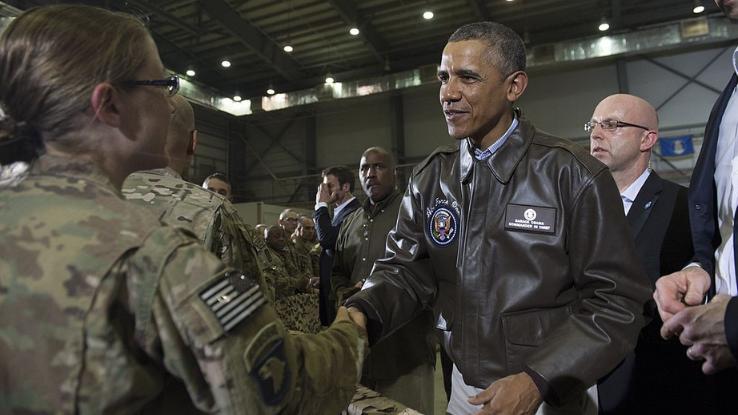
In front of a packed stadium in 2008, Barack Obama said in his acceptance speech that he would “restore our standing in the world,” and “end this war in Iraq responsibly and finish the fight against al-Qaeda and the Taliban in Afghanistan.”
Despite running on a platform that called for an end to the U.S. presence in Guantanamo Bay and the Middle East, the Obama era felt like a continuation of the War on Terror. But there was some notable progress made in the U.S. attempt to protect Afghani civilians from insurgents. In early 2009, Obama sent 17,000 troops to add to the 36,000 U.S. troops already there and the 32,000 troops sent by NATO. Both conservatives and liberals praised Obama and his staff for their successful — at least in appearance — efforts. Despite this, the war in Afghanistan faded into the back of American consciousness.
In May of 2011, Barack Obama announced the capture of Osama bin Laden. It seemed like the war could conclude and the endless spending and violence could come to a close. But, aside from bin Laden’s capture, this war lacked the same kinds of definitive moments we’ve seen in past conflicts. The mass protests and support rallies fizzled out. For Americans, the war was ever-present and invisible. It was a consistent segment on the news and appeared in Oscar-winning films like Zero Dark Thirty – a movie based on Seal Team 6, the group of soldiers that accomplished the bin Laden mission. In a way, the war in Afghanistan became an expensive part of everyday life – one that many Americans without relatives involved in the war became accustomed, and possibly even desensitized, to.
Trump Years: Should War Be Privatized?
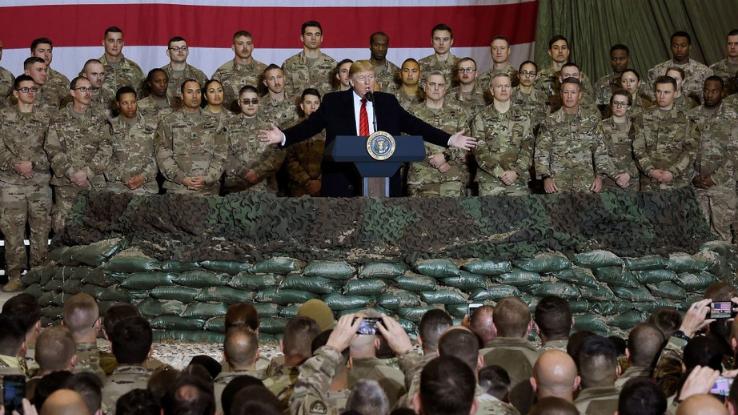
As the U.S. presence in Afghanistan seeped into the latter half of the 2010s, another new president and Cabinet emerged — as did renewed questions about how the war should be fought and who should be fighting it. This is where Blackwater — a private military company that supplies weapons and security personnel — comes into play.
The CEO of Blackwater, Erik Prince, argued that, with half the manpower, Blackwater could handle a majority of the combat in the Middle East using ex-military contractors. With such a high level of national security potentially at play, many questioned if this would be an appropriate move. President Donald Trump seemed to entertain the idea, even pardoning Blackwater for its 2007 war crimes. Coincidentally, Erik Prince is the brother of Trump’s Secretary of Education, Betsy Devos.
Much like Obama’s plan prior to the surge, the 45th president did significantly reduce the number of troops in Afghanistan. Consequently, several news outlets have reported that the Taliban began gaining in numbers and strength once again as the U.S. military presence diminished.
Biden’s Promise: “I Will Not Send Another Generation to War”
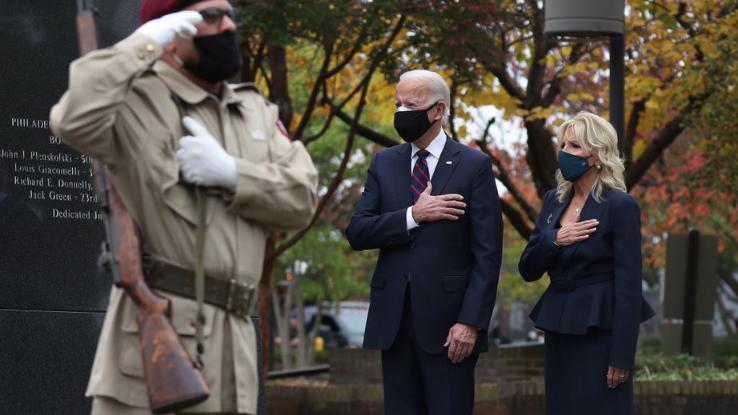
On April 14th, 2021, President Joe Biden announced that he planned to withdraw U.S. soldiers from Afghanistan. President Trump actually brokered this agreement between America and the Taliban while he was in office. When Biden took over as president, he also took on the responsibility of honoring or rescinding on this deal. President Biden cited mounting death tolls and support for military veterans as his primary reasons for proceeding with the deal.
On July 2nd, 2021, President Joe Biden doubled down on his decision to bring U.S. troops home by withdrawing soldiers from the Bagram airfield. At the time, there were roughly 2,500 troops each in Iraq and Afghanistan. Biden stated that his goal was to bring all remaining troops home by September 11, 2021. U.K. Prime Minister Boris Johnson also confirmed that most U.K. troops had left Afghanistan by early July 2020.
Between July 8th and July 23rd, reports of increased Taliban activity began to circulate. The U.S. military responded with airstrikes against Kandahar, the Taliban’s place of origin. Moreover, President Biden expressed doubt that the Taliban would be “overrunning everything and owning the whole country” should America continue to withdraw support.
However, that’s precisely what would happen throughout August 2021. The Taliban launched successful assaults against Kandahar and Herat, reclaiming cities they were ousted from 2 decades ago. Health officials like Dr. Shir Ali Shakir and Ashraf Ghani, the President of Afghanistan cited the “abruptness” of America’s withdrawal as the reason why things deteriorated so quickly.
As of August 15th, 2021, the Taliban has regained control of Afghanistan, leaving the Afghan military in ruins. Footage has circulated of Taliban soldiers occupying Afghanistan’s presidential palace. President Ghani has fled the country, and countless Afghanis are at the mercy of the Taliban. In response to this, President Biden has stood by his decision to withdraw U.S. forces. Biden has also stated that the Afghan government “discouraged” the U.S. from organizing a mass exodus of Afghanis to “avoid triggering a crisis of confidence”.
This situation continues to unfold at a rapid pace and new developments are surfacing every day. Organizations dedicated to helping Afghani citizens are unprepared to deal with these changes alone. The International Rescue Committee intends to stay active in Afghanistan and aid as many citizens as possible. They can’t succeed, however, without support from world leaders and donators.





